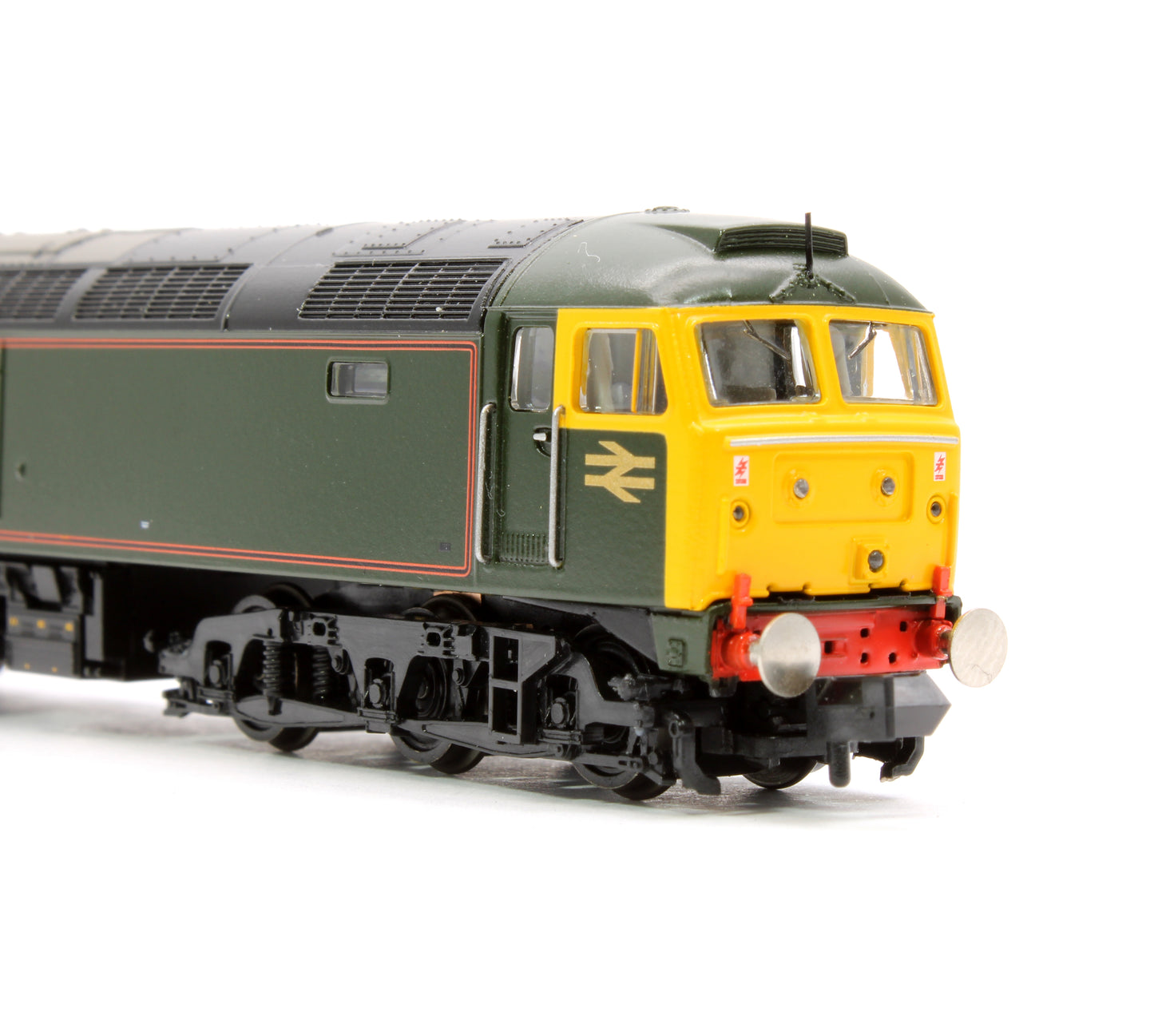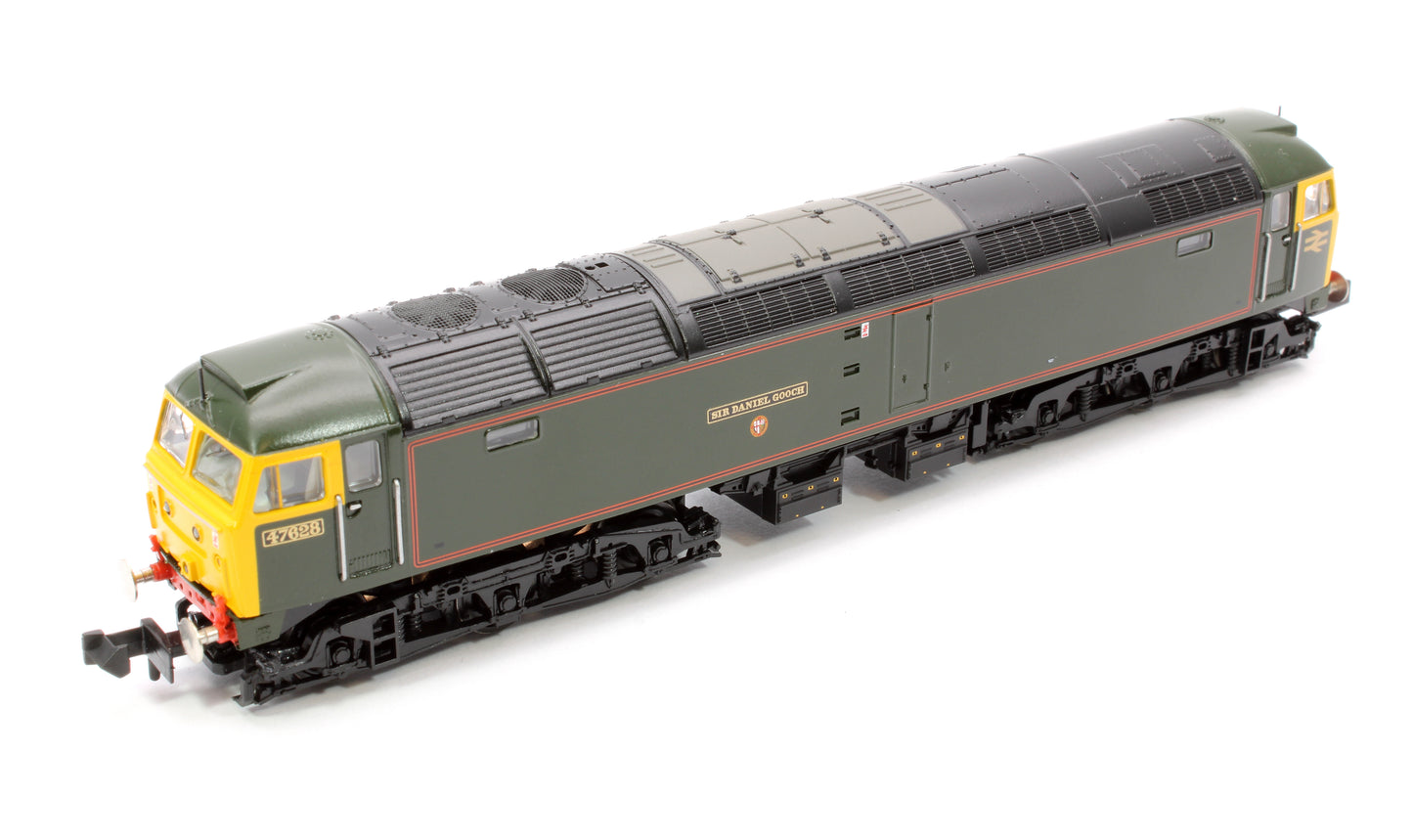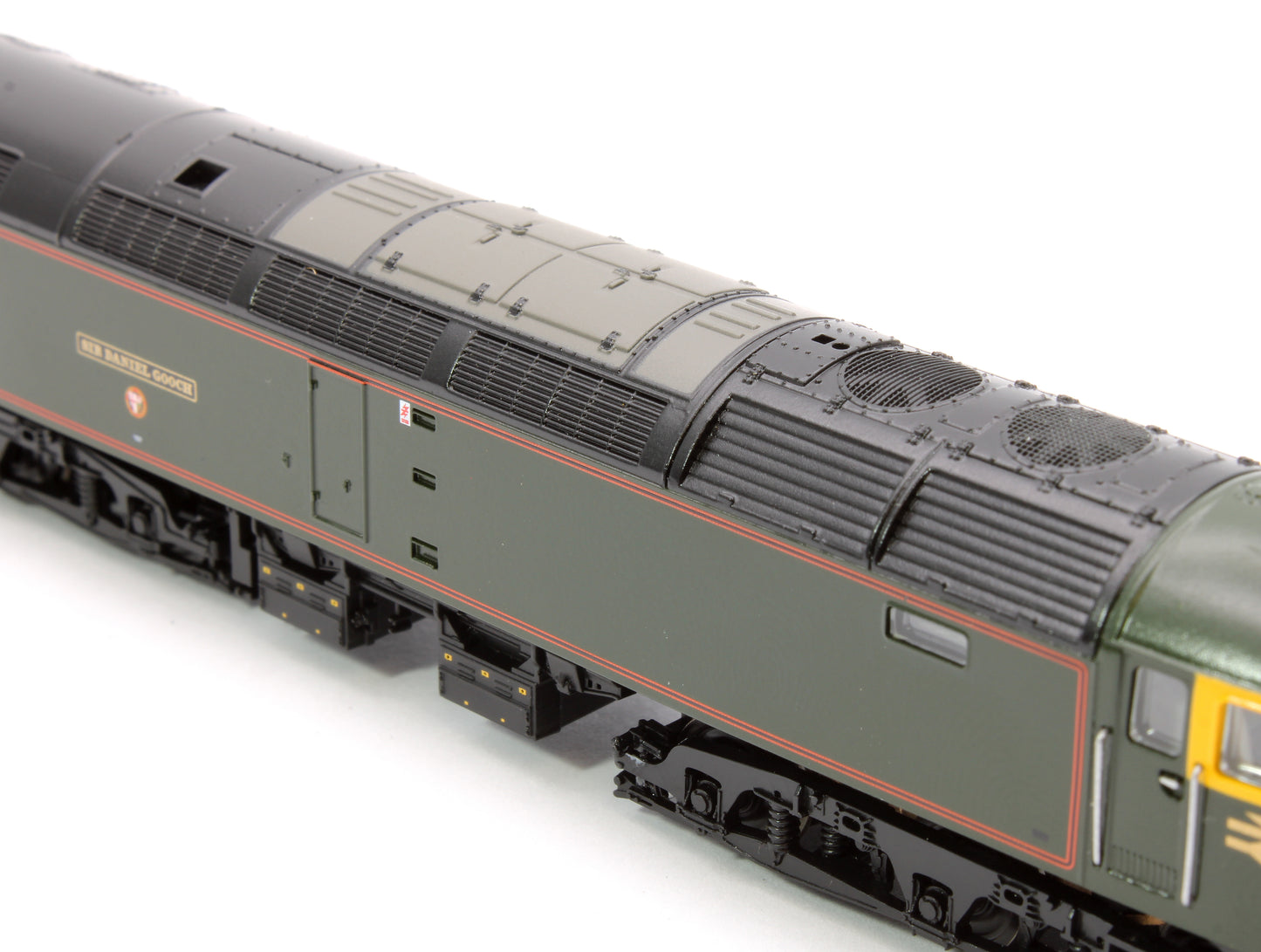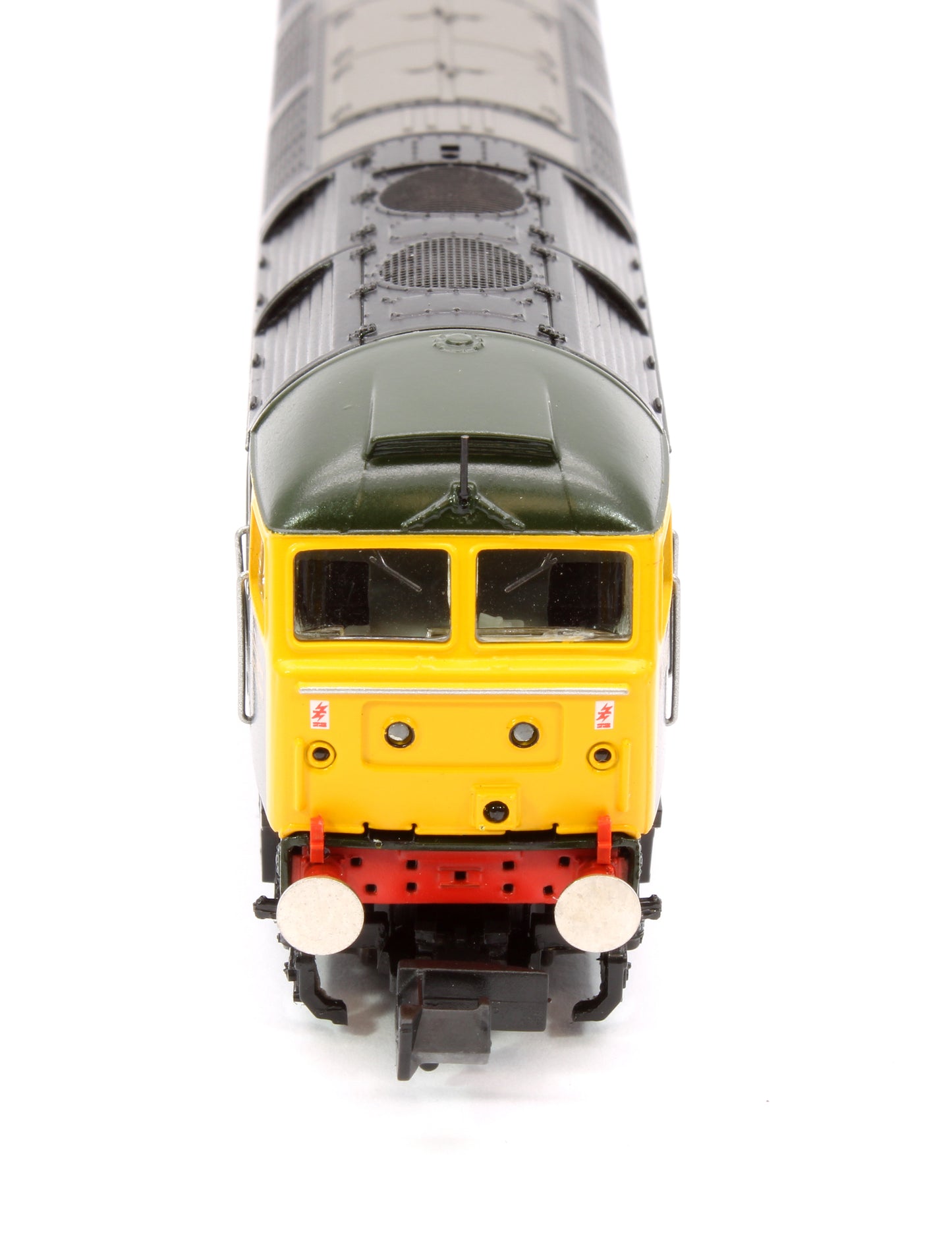Graham Farish 372-247Z Class 47 47628 'Sir Daniel Gooch' GWR 150th Anniversary Livery Diesel Locomotive














Product Details
| SKU | 372-247Z |
|---|---|
| Vendor | Graham Farish |
| Categories | Bachmann Winter 2023 Announcements Bargains Best selling products Class 47 Locomotives Class 47812 Rail Operations Group Diesel Locomotives Era 8 Exclusive to Rails Gift Ideas Graham Farish In stock Items Latest Releases Locomotives N Gauge Bargains N Gauge Diesel Locomotives N Gauge Latest Releases N Gauge Locomotives N Gauge scale New Arrivals from Bachmann New products |
| Scale | N Gauge |
| Share | |
| Features |
|
Product Description
The popular BR Class 47 Diesel Locomotive returns to the Graham Farish range following upgrades to enhance the model’s specification that allow SOUND FITTED versions to be offered for the first time. This model of No. 47628, which has been produced exclusively for Rails of Sheffield, depicts one of the four Class 47s repainted into GWR livery for the GWR150 celebrations in 1985. The locomotive already carried the name of the GWR’s first Superintendent of Locomotive Engines (and later Chairman), having been named ‘Sir Daniel Gooch’ in 1965. Following the GWR150 event, No. 47628 remained in this condition until 1990.
Technicial advancements employed on the Graham Farish Class 47 include a Next18 DCC decoder interface, pre-fitted speaker, cab lighting (when used on DCC) and independent control of the directional lights at each end. The Next18 interface and pre-fitted speaker are used to full effect on SOUND FITTED models which play realistic sounds straight out of the box.
- Graham Farish N Scale
- Era 8
- Pristine GWR 150th Anniversary Green livery
- Running No. 47628
- Named ‘Sir Daniel Gooch’
- Equipped with a Next18 DCC Decoder Socket – Recommend Decoder 36-567B
- Length 130mm
DETAIL VARIATIONS SPECIFIC TO THIS MODEL
- Plated Headcode Panels with Marker Lights at the No. 1 End and Sealed Beam Marker Lights at the No. 2 End
- Original Bufferbeam Valances
- Cab-Front-mounted ETH Equipment
- Single Arm Windscreen Wipers
- High Intensity Headlight
- Round Buffers
- Open Cab Roof Vents
- Serck Radiator Grilles
- Smooth Exhaust Panels
- Plated Roof Boiler Port
- Water Tanks Removed
- NRN Aerials
- Plated Bogie-mounted Cab Steps
GRAHAM FARISH CLASS 47 SPECIFICATION
MECHANISM:
- Coreless, twin shaft motor with two flywheels providing drive to both bogies
- All axle drive
- Electrical pickup from eight wheels
- Diecast metal chassis block
- Gearing arranged for prototypical running speeds and haulage capabilities
- 9mm (N gauge) wheels to NEM310 standards with authentic profile and detailing
- Bogie-mounted coupling pockets to NEM355 standards at each end
- Designed to operate on curves of second radius (263.5mm) or greater
DETAILING:
- Bogies constructed from multiple components featuring full relief detail
- Separately applied detail parts, including lamp irons, cab handrails and roof aerial (where applicable)
- Separately fitted battery box/water/fuel tank assembly
- Cab Interior Detailing
- Each model supplied with a full set of model-specific bufferbeam pipework and accessory parts
LIGHTING:
- Directional lighting, switchable on/off at either end on DCC or Analogue control
- Cab lighting, switchable on/off (when used on DCC only)
- Authentic light colours and temperatures selected for each model based on era and application
DCC:
- Next18 DCC decoder interface
SOUND:
- Speaker installed in all models for optimum sound reproduction
- ESU Loksound V5DCC Sound Decoder fitted to SOUND FITTED versions
- Sound files produced specifically for the Graham Farish Class 47 using recordings from real locomotives
- SOUND FITTED models operate on DCC and Analogue control as supplied
LIVERY APPLICATION:
- Authentic liveries applied to all models
- Multiple paint applications employed on each model using BR/TOC specification colours
- Logos, numerals and text added as appropriate using multi-stage tampo printing using authentic typefaces, logos and colours
CLASS 47 HISTORY
Towards the end of the 1950s, British Railways began planning a new fleet of diesel locomotives and after investigating several prototypes, BR decided to place an order with Brush Engineering for 20 locomotives during February 1961. The resulting design became the iconic Brush Type 4 Diesel locomotive, a practical, versatile design with a very distinctive cab. Powered with a Sulzer engine and initially rated at 2,750hp, the locomotive could achieve a top speed of 75mph with a tractive effort of 55,000lb. Building commenced in January 1962 and the first locomotive No. D1500 appeared in late September of the same year with test runs on the London Midland Region and Western Region. The design was a success and BR went on to order a total of 512 with continuous production through to early 1967, forming the largest single class of main-line diesel locomotives in the UK.
During this time and subsequent years, several variations appeared with an increase in speed and tractive effort to 95mph and 62,000lb respectively. Originally fitted with four character train reporting head-codes, these changed to marker lights, with the addition of high intensity lights and roof aerials in the late 1980s. Other variations involved the fitting of different types of steam heating boiler for early BR coaching stock, later replaced with electric train heating for use with modern rolling stock. The numbering system started with four figures but changed to five with the introduction of the TOPS coding system which saw the locomotives classified as Class 47 Diesels with variations such as 47/0, 47/2, 47/3, 47/4 and 47/7. By the end of the 1990s, half of the Class 47 fleet had been withdrawn or scrapped, 33 have been converted into Class 57 locomotives and several have been preserved, including the original No. D1500, now numbered 47401.













